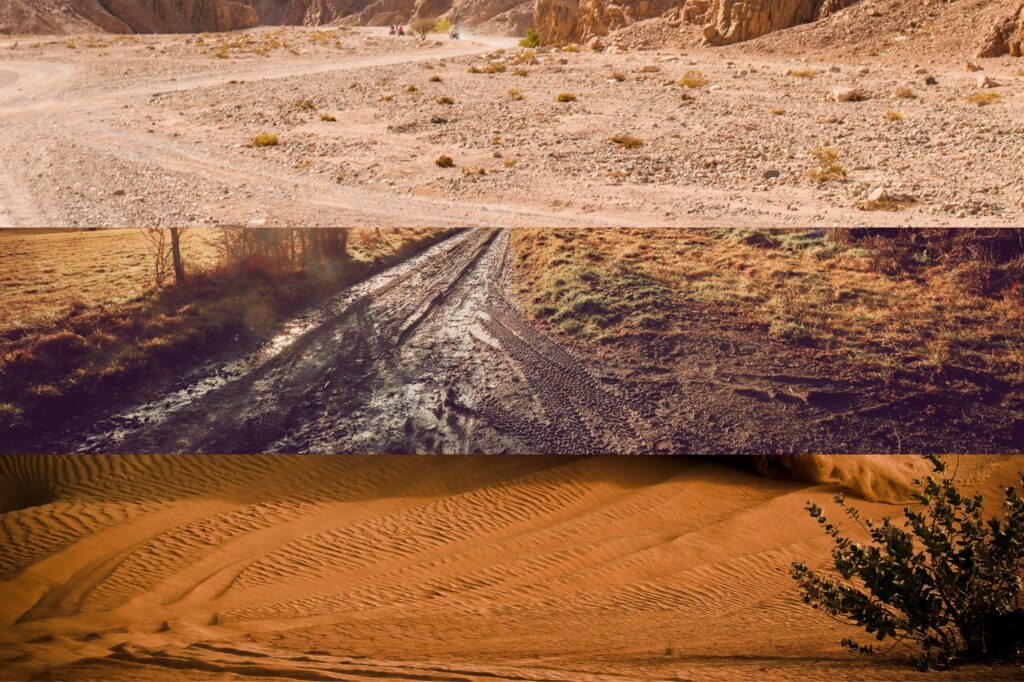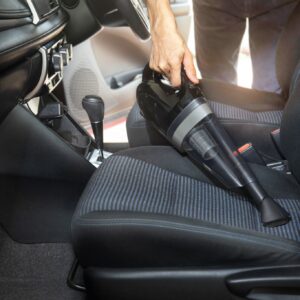Off-roading is fun and exciting. You’re going off the beaten path and exploring places that will test your vehicle’s limits. However, it can also get dangerous, especially if you’re going for challenging terrains.
The trails can have everything from sharp rocks to hidden potholes to sharp inclines, so you need to be careful, especially if you’re off-roading for the first time.
Fortunately, like every thrill-filled experience, you can combat the risks of off-road driving with proper preparation and knowledge.
Must-Know Off-Roading Terminologies
Before heading off on your adventure, there are some concepts that you need to know.
4×4 High vs. Low
Off-road vehicles typically have a manually adjustable drivetrain with two settings: 4Hi and 4Lo.
You can select these settings using the transfer case, which splits the engine torque from the transmission and sends it to the rear wheels or all four wheels.
4Hi is the better option for day driving, as it lets you go for a higher top speed if you want to keep momentum on trails. If you need to rock climb, go for 4lo for more power and torque. When in 4lo, you can’t go fast and are limited to first gear.
How you switch modes depends on your vehicle.
Older cars usually have a second lever beside the gear shift lever for switching into the various 4WD modes, but modern ones just have buttons or a dial on the dashboard for the same purpose.
Locking Differential
Locking differentials can lock the axles together to provide 100% of the available torque to the wheel with traction. This makes it a useful feature when you’re stuck in the mud or a hole, as it gives more power to the wheel.
Without it, the car’s computer typically delivers more power to the wheel with the least resistance, making it harder to get out of the situation.
It only takes a push to a button to activate it in most modern cars. For older cars, the computer will manually adjust.
Traction Control
Traction control detects if your wheels lose grip on the road, automatically applying the brakes or cutting down the engine’s power to the slipping wheel.
Each car’s traction control differs, so it’s best to go over your owner’s manual to see how it can help you during your off-road adventures. For example, some trucks require you to manually turn the traction control on or off.
How to Prepare for Your First Off-Road Adventure
How much hassle you’ll deal with while off-roading depends on how well you’re prepared for your trip. Here are some tips for an adventure that’s memorable for all the right reasons.
Choose the Right Vehicle
Not every car can handle off-road trails.
For one, it needs to have the appropriate off-roading tires, which we’ll discuss more. And as mentioned, it should ideally be 4WD to provide the necessary power.
You’ll also need a bit of ground clearance to prevent underside damage caused by debris and uneven grounds.
Invest in Proper Tires
Good off-roading wheels need to be high-quality and durable, especially if you’re taking on rugged terrains.
Most off-roaders choose aluminum wheels because they’re lighter and are easy on the eyes. Not only that, but steel wheels tend to rust and get damaged, while aluminum only corrodes, which is a simple cosmetic issue for aluminum.
There’s also a rule of thumb that you should choose a wheel diameter equal to half the total height of the tire.
Bring Off-Roading Essentials
Speaking of tires, it’s not the only thing you need to invest in when it comes to off-roading. Here are some items and equipment that you shouldn’t leave home without:
- A fire extinguisher in case of emergencies
- A jack and a shovel in case you get stuck
- An air compressor and a spare tire if you get flats
- A first-aid kit
- A phone or radio for communication
- A winch and a tow rope to get your vehicle unstuck
Note that there are different types of ropes. There are even some that are designed not to damage anything if it breaks.
Know the Different Types of Terrains

Once you’ve identified the trail you want to take on, research it. Are you driving mostly through dirt roads and grasslands, or are you crossing shallow rivers and climbing steep terrain?
Is it mostly dry ground, or does the trail have areas with sand and mud? Knowing what to expect during your trip will help you prepare properly.
Dry Ground
Dry ground is the easiest terrain to traverse, as you’ll only need good tires and knowledge of the route, making it the best terrain for beginners to drive on.
Mud
Compared to dry ground, mud is much trickier as you can easily get stuck in them.
What you can do to get more traction is reduce the tire pressure to 20 psi, turn the traction control off, and put the car in 4Hi. If possible, choose a higher gear for more torque, as well.
Sand
Lastly, sand is harder to drive on than dry ground and mud because you’ll need to shift to 4Lo to power through.
When facing sand dunes, you should only drive straight up and down. Driving on them at a slight angle will cause the weight transfer to go to the downside side wheels, increasing the risk of slipping.
If you get stuck, change to 4hi to maximize power. Additionally, keep your thumbs on the outside of the steering wheel and use your left foot to brake to get the timing right.
Go With a Friend
Find a friend or several to come with you; even better if they have off-roading experience. An extra pair of eyes can help you avoid deep ruts and other obstacles.
If none of your friends go off-roading, you can always join off-roading groups. They’ll have knowledge about different trails, and you can share your love for your newly-found passion.
Off-Roading Tips for First-Timers
As for the drive itself, it’s best to look for an easy trail, air down your tires, and drive slowly.
Look for an Easy Trail
As mentioned, dry ground should be the most beginner-friendly terrain. The odds of you getting stuck are low, making the drive enjoyable.
Some options to choose from include cross-country, green laning, or hill climbing. The choice is up to you, but make sure to pick one that you and your car can handle.
Air Down the Tires
Airing down your tires to get better traction can help you out when you’re in a bind. You can carry a portable air compressor with you and adjust the pressure as you go.
Start by dropping the tires to 20 psi and working your way down. However, you shouldn’t go below 15 as it increases the odds of running the tire off the wheel.
Drive Slow
Lastly, it’s ideal to go slow and steady to avoid hazards and familiarize yourself with off-road driving. Driving slowly also lets you enjoy the scenery, which is a nice bonus. You can go faster once you get the hang of it.
Getting Your Hands on Off-Road Accessories
If you want to go on an off-road adventure, you’ll need to make sure you have all the appropriate accessories installed to help you get started. It’s not a good idea to embark on a wilderness drive without the necessary gear. It can be difficult if you don’t know what to look for – especially if you want to find accessories compatible with your vehicle.
Fortunately, with the help of CarParts.com, finding components and accessories designed for off-road adventures has never been easier.
The best part? You can get your hands on some off-roading accessories without ever leaving your house. Our distribution centers are strategically located all over the US, meaning you can expect to receive your order in a matter of days.
To get started, use your mobile device or computer to visit our website. Input all of your vehicle’s details such as the year, make, model, and engine with the vehicle selector. This way, you can easily find various parts designed to work with your vehicle.
On top of that, every item in our catalog is sourced from the most trusted manufacturers in the industry. Each item is carefully vetted by a team of professionals to guarantee quality and longevity. You won’t have to worry about your new off-roading parts failing you any time soon.
Don’t hold off on equipping your vehicle with various off-roading essentials. Browse our catalog now.
Any information provided on this Website is for informational purposes only and is not intended to replace consultation with a professional mechanic. The accuracy and timeliness of the information may change from the time of publication.




















